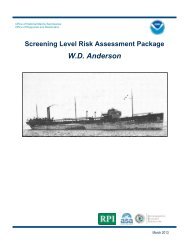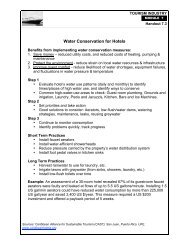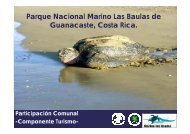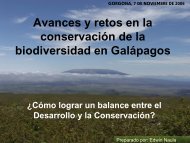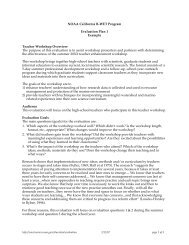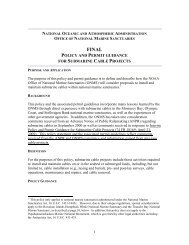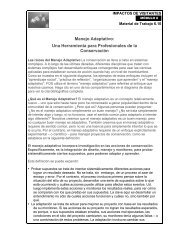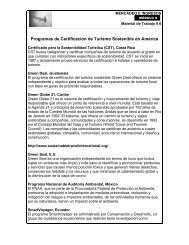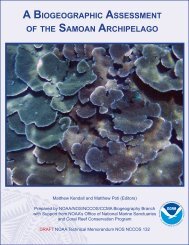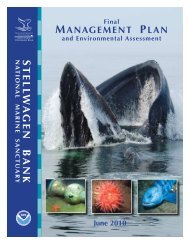The Hawaiian spinner dolphin, Stenella longirostris: Effects of tourism.
The Hawaiian spinner dolphin, Stenella longirostris: Effects of tourism.
The Hawaiian spinner dolphin, Stenella longirostris: Effects of tourism.
You also want an ePaper? Increase the reach of your titles
YUMPU automatically turns print PDFs into web optimized ePapers that Google loves.
10<br />
Barr and Slooten (1998) noted that the responsiveness <strong>of</strong> dusky <strong>dolphin</strong>s<br />
(Lagenorhynchus obscurus) to vessels depended upon the <strong>dolphin</strong>s' activity state as<br />
well as the type, number, and behavior <strong>of</strong> the vessels. Dusky <strong>dolphin</strong>s appeared to be<br />
more sensitive to human activities during the afternoon. This could be due to<br />
sensitization to human activities from repeated contact, or perhaps that they are more<br />
vulnerable to disturbance during the afternoon because they are usually in a more<br />
restful state at that time <strong>of</strong> day (Barr and Slooten 1998). <strong>The</strong> presence <strong>of</strong> a combination<br />
<strong>of</strong> vessel types (fishing, whale watching, and private boats) in the afternoon was<br />
correlated with a significant increase in the number <strong>of</strong> dusky <strong>dolphin</strong> aerial activities<br />
and directional changes (Barr and Slooten 1998). Barr and Slooten (1998)<br />
hypothesized that combinations <strong>of</strong> different vessel types caused the greatest<br />
disturbance, because it may be difficult for <strong>dolphin</strong>s to predict the behavior <strong>of</strong><br />
individual boats.<br />
Reactions to Tourist Vessels and Swimmers<br />
<strong>The</strong> strategy used by tour boat operators significantly affected bottlenose and<br />
common <strong>dolphin</strong> responses to swimmers, and <strong>dolphin</strong> responses varied by species<br />
(Constantine 1995, Weir et al. 1996, Constantine and Baker 1997). Only a small<br />
proportion <strong>of</strong> bottlenose and common <strong>dolphin</strong> schools in the Bay <strong>of</strong> Islands, New<br />
Zealand, interacted with swimmers (Constantine 1998). Barr (1995) also observed that<br />
few dusky <strong>dolphin</strong>s per school (as few as 9 out <strong>of</strong> 350) would interact with swimmers<br />
<strong>of</strong>f the Kaikoura coast <strong>of</strong> New Zealand.



